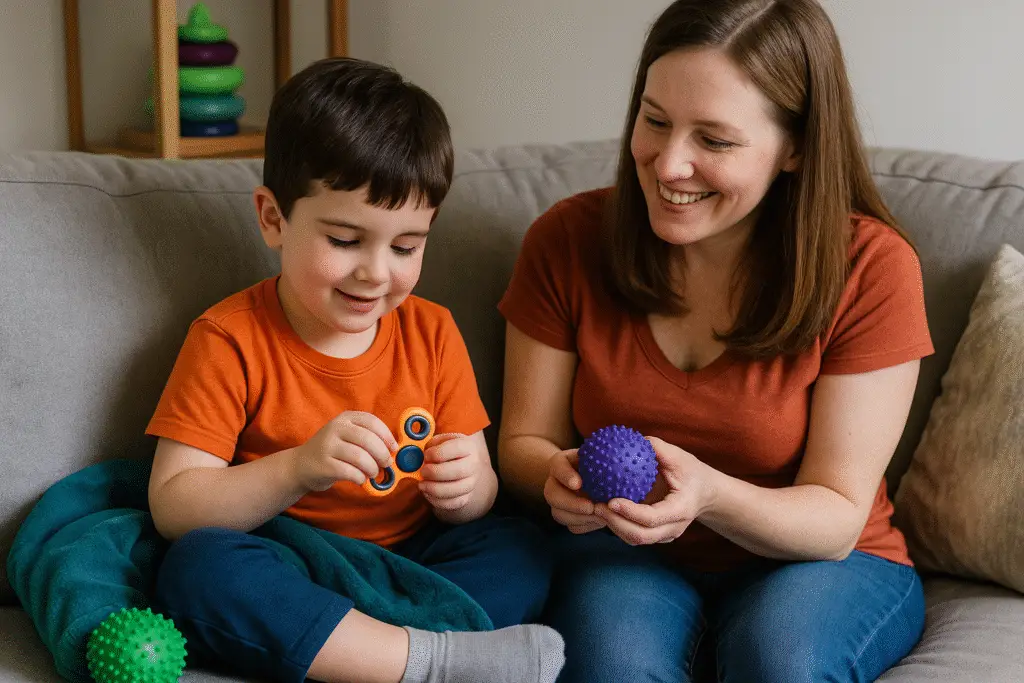Discover Effective Sensory Strategies for Autistic Kids
Understanding and addressing the sensory needs of autistic children can dramatically enhance their quality of life. As a parent, you might feel overwhelmed trying to navigate these unique challenges. This article will explore five essential sensory strategies to help your autistic child thrive, providing comfort and empowerment for your family.
Introduction to Sensory Needs and Autism
Autistic children often experience the world differently due to unique sensory processing systems. They might be hypersensitive or hyposensitive to various stimuli, which can affect everything from their daily routines to their social interactions. Understanding these sensory needs is critical to supporting an autistic child’s development and well-being.
Parents play a crucial role in identifying and responding to their child’s sensory preferences. Observing your child’s reactions to different environments can offer insights into their sensory profile. Whether it’s a particular texture, sound, or lighting condition, recognizing what comforts or overwhelms your child is the first step toward effective support.
Creating a sensory-friendly environment involves tailoring experiences to meet your child’s needs. This might include calming spaces at home or structured sensory activities. By prioritizing these adjustments, you can help your child navigate their world more comfortably and confidently.
Creating a Safe and Calming Space
Children with autism often benefit from having a designated safe space where they can retreat and decompress. This area should be free from overwhelming stimuli and tailored to their sensory preferences. Consider using soft lighting, comfortable seating, and familiar objects to create a calming atmosphere.
Incorporating sensory tools such as weighted blankets or noise-canceling headphones can further enhance this space. These tools can provide the soothing pressure or silence needed to help your child relax. Introducing calming scents like lavender can also contribute to a peaceful environment.
Regularly assess and adapt this space as your child’s needs change. Flexibility is key to ensuring their comfort and security. By providing a reliable place for retreat, you empower your child to manage sensory overload effectively.
Incorporating Sensory Diets
A sensory diet is a personalized activity plan designed to meet the sensory needs of an autistic child. Implementing a sensory diet involves incorporating a variety of activities throughout the day that support your child’s sensory regulation. These activities can help improve focus, reduce anxiety, and enhance emotional resilience.
- Deep Pressure Activities: Use weighted vests or blankets to provide comfort.
- Movement Breaks: Encourage activities like jumping, swinging, or spinning.
- Oral Motor Input: Chewing gum or crunchy snacks can provide necessary oral stimulation.
- Tactile Play: Engage in activities using playdough or sensory bins.
- Visual Supports: Use charts or visual schedules to help with transitions and routines.
Work with an occupational therapist to tailor activities to your child’s specific needs. A well-structured sensory diet can lead to significant improvements in daily functioning and emotional well-being.
Expert Advice: Listening to Your Child
According to Dr. Jane Smith, a renowned pediatric occupational therapist, "Listening to your child’s cues and respecting their sensory boundaries is paramount. Understanding that every child is unique allows parents to provide truly individualized support."
Dr. Smith emphasizes the importance of observing how your child communicates their sensory needs, whether through words, behaviors, or physical reactions. This attentive approach helps parents identify triggers and comfort strategies more effectively.
By fostering open communication, parents can empower their children to express their needs confidently. Encouraging self-advocacy from a young age helps autistic children develop the skills they need to navigate their environments successfully.
Navigating the sensory landscape of autism requires patience, understanding, and adaptability. By implementing these five essential strategies, you can create a nurturing environment that allows your child to flourish. Remember, your support and willingness to adapt are crucial in helping them lead a fulfilling life. Embrace the journey, and consider consulting with professionals to further tailor your approach. Your dedication can make a profound difference in your child’s world.
Meta Description: Discover 5 essential sensory strategies to support your autistic child. Enhance their comfort and well-being with these expert-backed techniques.

